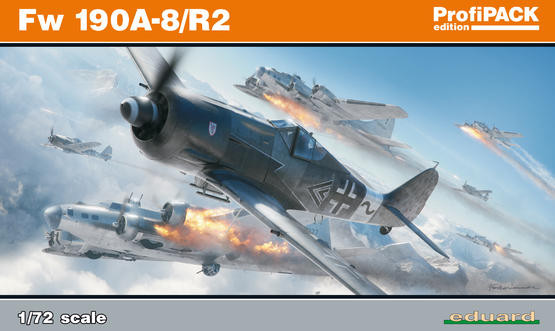
Eduard 1/72 Focke-Wulf 190A-8/R2 ProfiPACK
By Jacob Russell
The Plane
The Focke-Wulf FW190A-8 was built in greater numbers than any other FW190 variant. Over 1300 were produced during 1944. The A-8 used the basic armament of the A-7 (two MG 131s in the fuselage and four MG 151s in the wings), and the BMW 801D-2 radial engine with the MW 50 (Methanol-Water) boost system. With the MW 50 system, 1700 hp was available at takeoff and 1440 hp was available at 18,700 feet. The GM-1 nitrous oxide injection system was also an option.
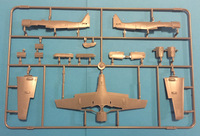
|
The word Rüstsätze ("R") refers to Luftwaffe field modification kits. The R2 kit replaced the pair of MG 151 cannons mounted in the outer wing gun bays with MK 108 30mm cannons. The R7 kit was a set of external armor plates for the fuselage, windscreen and canopy, and the R8 conversion combined the R2 and R7 kits with additional internal armor for the MK 108 cannon. The aircraft equipped with these Rüstsätze were informally called Rammjägers (ram fighters) and they were assigned to specialized Sturmstaffeln (Storm Squadrons). Many of these planes dispensed with the upper fuselage machine guns. They were tasked with attacking the Allied bombers ranging over the heart of Germany in 1944.
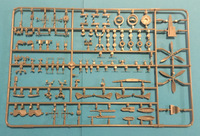
|
The plane's flight characteristics were adversely affected by the combination of the armor and wing cannons, making them vulnerable to the Allied escort fighters. The Luftwaffe subsequently created Bf109 equipped Staffeln to follow the Rammjägers into combat, to protect them from the Allied fighters.
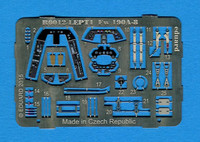
|
The Kit
The kit comes in Eduard's customary box with a nice illustration of an A-8/R2 attacking B-17 Flying Fortresses. It consists of 128 parts on 3 sprues, one of which is clear. 44 of the parts go unused for this variant, so you will have lots of parts for the spares box. This a ProfiPACK boxing, so it also includes a set of canopy masks, plus a 25 piece photo-etch fret. Many of the photo-etch pieces are pre-painted, and on you get a new instrument panel, rudder pedals, seat harness, oleo scissors, D/F (Direction/Finder) loop, "Morane" antenna mast, etc.
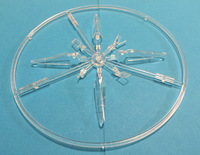
|
It's worth giving special notice to the clear parts. The canopy flexed as it slid backwards on its rails and Eduard has captured this detail.
The surface detail of the wings and fuselage is superb, with fine rivet detail. The fuselage is different in that the external armor below the cockpit has been added. The wings are also modified to accurately depict the R2 variant with the outer cannon. By the way, the kit includes all of the pieces to model an R2, R7 or R8.
The ailerons and and rudder are separate pieces so you can display them displaced. The wheel wells are deep and convincingly detailed. The cockpit is shallow but sufficiently detailed to look the part.
You get 2 styles of tires, smooth and ribbed, plus the early (perforated) and late (smooth) wheel faces. There are 2 propellers included, one of which is the wide blade, wooden VDM 9-12157H3 for the later A-9 variant. There's also an ETC 50 rack plus a drop tank and an SC 250 bomb. The BMW 801-D is well molded but it will be all but invisible behind the prominent 12 blade cooling fan and propeller.

|
There are 2 well printed decal sheets, one of which is devoted to air frame stencils. The main decal sheet includes a pair of instrument panel faces and a set of seat belts. The decals are up to Eduard's usual standards. They are well printed, legible, and in register. There are 5 decal options in the kit, all of which are painted in the standard mid-War Luftwaffe colors of RLM 74/75/76:
"Black Double Chevron", Hptm. Wilhelm Moritz, CO of IV.(Sturm)/JG 3, Memmingen, Germany, July 1944. This plane had an all black cowling with stylized black panels aft of the cowling and a white fuselage band. The spinner was black with a white spiral. The black panels extended down the fuselage onto the inner wings. The fuselage armor plates were either light grey or unpainted. The fuselage crosses had a black 'fill".
"Yellow 12", Uffz. Paul Lixfeld, 6.(Sturm)/JG 300, Löbnitz, Germany, December 1944. This colorful aircraft had a partially over painted RLM 23 Red fuselage band and RLM 04 Yellow lower cowl. The 2 piece armored cowl ring was RLM 76 and the rear section included a Yellow lower half. The fuselage armor was RLM 75, the exhaust panels were black and the whole fuselage was heavily chipped and weathered. The spinner was RLM 70 with a white spiral. The fuselage crosses were filled with RLM 74. The upper cowling machine guns were deleted.
"White 21", Werknummer 682989, 5./JG 301, Germany, May 1945. This plane had a yellow/red fuselage band and a black spinner with a white spiral. The 2 piece armored cowl ring was RLM 74 in front and RLM 02 grey in back. The fuselage crosses had an RLM 74 fill. The upper cowling machine guns were deleted.
"Green 3", Oberstlt. H. - G. von Kornatzi, CO of II./JG 4, Welzow, Germany, September 1944. This plane had armored canopy glass in addition to fuselage armor. The spinner was black with a white spiral and the plane carried a black/white/black fuselage band. The upper cowling machine guns were deleted and the fuselage crosses had an RLM 74 fill.
"Red 1", Lt. K. Bretschneider, 5./JG 300, Löbnitz, Germany, December 1944. This Wurger had an RLM 70 spinner with a white spiral, an RLM 23 Red fuselage band and the fuselage crosses had an RLM 74 fill.
The instructions follow Eduard's standard format, with a parts map and a well illustrated, logical build sequence. Color callouts are for GSI Creos (Gunze) Aqeous and Mr. Color (acrylic lacquer) paints.

|
Conclusion
Most model makers have tried their hand at the radial engine Focke-Wulf FW190. Hasegawa led the field for many years with their 1/72nd kits. Airfix recently introduced FW190A-8 and F-8 kits that have more accurate wheel wells and better detailed cockpits than Hasegawa's.
The new Eduard kits are a decided cut above the rest. They are accurate and well detailed. They look good right out of the box, and if so inclined you can go to town with Eduard's photo etched sets and Brassin detail parts. I recommend this kit and I would like to thank Eduard for providing the review sample.
References
Focke-Wulf FW190, Volume I, by Krzysztof Janowicz, Kagero Publications, 2003
FW-190 in action, Aircraft Number 170, by Brian Filley, Squadron/Signal Publications, 1999
